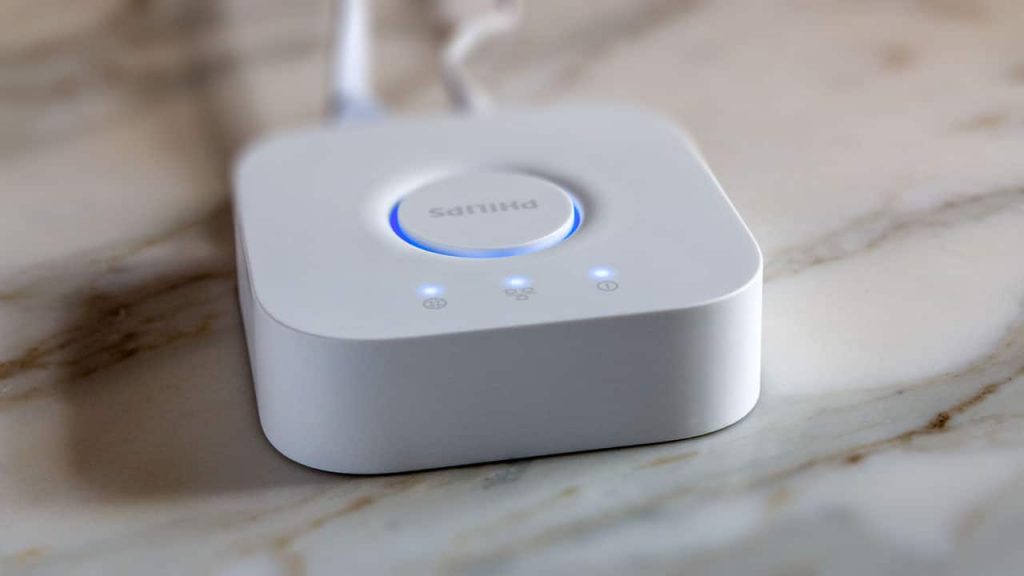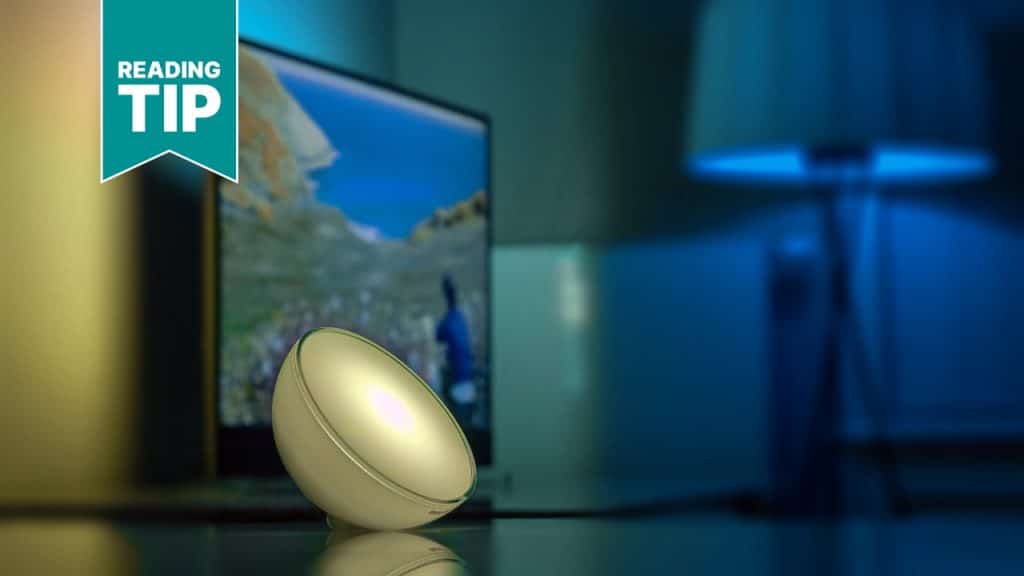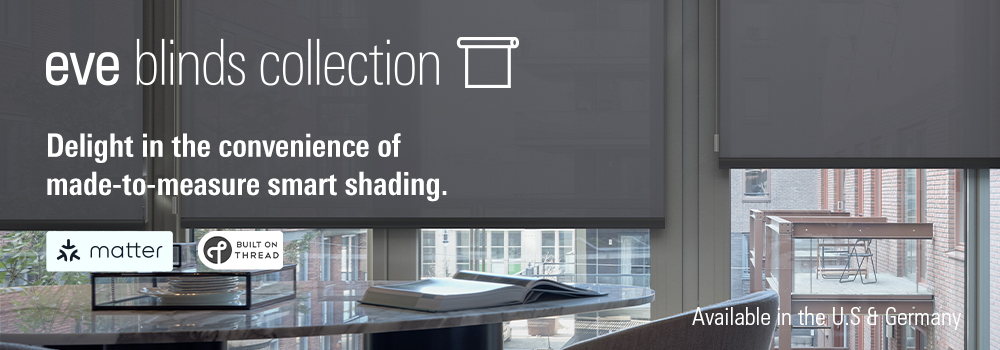
An interview with George Yianni, Head of Technology Philips Hue at Signify (link). The Dutch company describes itself as the world market leader for lighting and is an active supporter of the upcoming Matter standard. Philips Hue is expected to be among the first products ready for use when the new smart home standard launches.
Zur deutschen Übersetzung hier entlang.
Philips Hue can already be integrated into many smart home systems without the help of Matter. Nevertheless, you have supported the standard from the beginning. Why?
George Yianni: That’s nothing new. Philips Hue has always been among the first when it comes to smart home initiatives. We were launch partners of Alexa, one of the launch integrations of Google and HomeKit. Our aim is to build the best possible lighting experience and extend what consumers can do with lighting. But as there are use cases for lighting to be controlled together with thermostats, door locks etc. we find it important that we are well integrated in the right way with all the relevant smart home standards. More than 700 integrations show that we are probably the best integrated smart home product.
“Philips Hue has always been among the first when it comes to smart home initiatives.“
However, that is a lot of work. The ability to have the right integrations that unlock the right features means effort, and that effort increases with each new system that comes along. Matter is an opportunity for us there. Matter is an opportunity for us there. It lets us be involved in the standardization, so we can make sure that what’s important for lighting experience is well embedded in the standard. It doesn’t have to be built on top of things that are not ideal.
Can you give us an example?
Yianni: The most obvious case is lighting scenes where different smart home standards have a different approach. Our expertise is to create a rich experience with sophisticated functions in our own mobile applications. We would really like that the scenes you create in our environment are also available for use in the broader smart home. That has been implemented through long discussions with Alexa and Google, but has not yet made it into HomeKit.
Another example is the possibility to control lots of lights together at the same time. Not all the smart home standards are implementing that properly. Some give us as sequence of commands, which is not the same experience as with one command that controls all together at once. Thanks to our involvement in the Matter standardization, we can ensure that something like this is implemented properly.
In addition, Matter means that we have to maintain fewer integrations. If the standard becomes established over time, which we assume it will, this will free up capacities for other things.
Where is the dividing line between Matter and your own programming interface (API)? Will I still need the Hue app in everyday life?
Yianni: We will continue to run our own API next to Matter. Our mobile applications will continue to use our Hue-API for a richer feature set. When we do innovations, those will come to the Hue app first, as the standardization process takes time. And if it’s a proprietary thing just for Hue, we will not expose all the details to Matter. For example: We would be fine for any Matter device to start and stop a Hue Entertainment sync session, but we are unlikely to have that proprietary innovation given to other lights.
Matter serves as a smart home integration for multiple products working together. When it comes to a lighting centric experience, we aim that our API with our own app offers the richest way of doing that with the most functionality. Here we also have full control, which is not the case in Matter. We have got into the standard the ability for groups and scenes to be exposed to Matter. But how much of the full capabilities of the standard the important Matter apps implement remains to be seen.
“When we do innovations, those will come to the Hue app first. And if it’s a proprietary thing, we will not expose all the details to Matter.“
Is it hard to get something into the standard?
Yianni: There is a fixed process. There are working groups, you have to team up with other companies, you make proposals that have to get voted through etc. You may implement manufacturer-specific commands that don’t go through that process, but then you have to get someone to use them. Exactly: you need an app that uses them. You could create a Matter app by yourself, but that’s not exactly the goal of Matter. When you want everyone to have to support it, you have to bring it into the standard.
Philips Hue uses Zigbee and Matter will be integrated via the system’s bridge. Wouldn’t Thread be an alternative? Thread is part of the standard, and a Thread wireless network could do without a bridge.
Yianni: The Hue Bridge is not just a Wi-Fi to Zigbee translator. It has never been. It’s also the local intelligence of the system. It coordinates that your switches work well with the lights, it is what makes sure that the network is well managed. Entertainment streams, cloud services, automations, schedules … all that and more is managed by the bridge. Such a small, reliable “edge computer“ in the home is essential. Matter does not offer a solution for it. Building all the functionalities directly into lamps would make things much more complicated, and we don’t want to move them to the cloud. That is, even if we used Thread, we would still need a bridge.
Second: Mesh networking with Zigbee in an efficient and reliable way is really hard. We have been working on getting that to work well for a decade. And Thread at scale in the complexity of users homes is not yet proven. I’m a bit afraid of how open Thread will be. There will be many, many companies with many different implementations in the same network. So, I see a lot of risk, and we don’t have plans to build Thread light bulbs. I don’t say never, but we have very much a “wait and see“ approach towards it.
Last not least: We have a very happy and large installed base. A key benefit of Philips Hue is future-proof and always up to date. Many people have made large investments in a Hue system as part of their home infrastructure, not as a gadget. And they expect that these products remain relevant for at least ten years. So far, we have never asked consumers to buy new lights.
“So far, we have never asked consumers to buy new lights.“
But you asked them once to change the bridge – from the first to the second generation. That is not necessary for Matter? You can meet all the requirements with the current hardware?
Yianni: Yes, a software update will do. The intention is to update all 2nd generation bridges – the square ones – back to the first, seven-years-old models. We did dimension the bridge to be future-proof when we made it. We do not have the latest and greatest chip security hardware in it, but enough to comply to the security requirements of Matter.
In the end, the most important thing in the smart home is that products can be secure from external attack. Regardless what hardware you have in your chips, if someone has physical access to your device and can open it, he can bypass almost any chip security. And we are definitely robust against external threats.

What are the biggest challenges in implementation?
Yianni: The process is more complicated than a normal integration because it’s code we have to run locally on the bridge in an embedded environment. A cloud integration would be much easier. But the particular complexity of Matter is that we are implementing as we are standardizing. So, it’s very much an iterative process. You are building against a moving target.
“It’s very much an iterative process. You are building against a moving target.“
Does Matter change anything in the way you continue to develop Philips Hue?
Yianni: It will change the way how we integrate our system with partners. It changes the conversation. When we want to build a new experience with another brand who has a different vertical, we will try first to push things towards Matter and only look beyond if it’s not possible in the standard. Even team up with them to work with the Matter alliance to get things done. Apart from that, not much is going to change. How we build new lights is not significantly impacted by Matter.
What has to happen for the standard to be a success, besides a wide range of devices?
Yianni: The important thing at the beginning is what the major Matter apps do – the Matter ecosystems. It’s not yet totally visible how that will look, but it will determine how people experience Matter. The majority of people will not see Matter, they will continue to see Alexa, Google, HomeKit. Underwater comes Matter, and it really depends on what the applications do with it, what value the consumer gets out of it.
Mr. Yianni, thank you very much for this interview.
Share this information:


